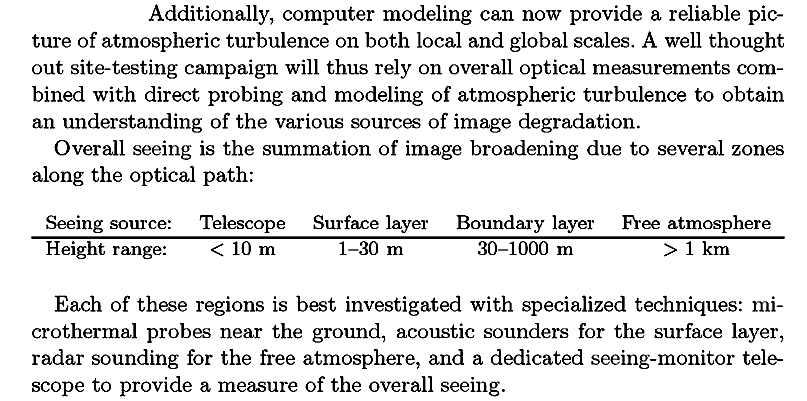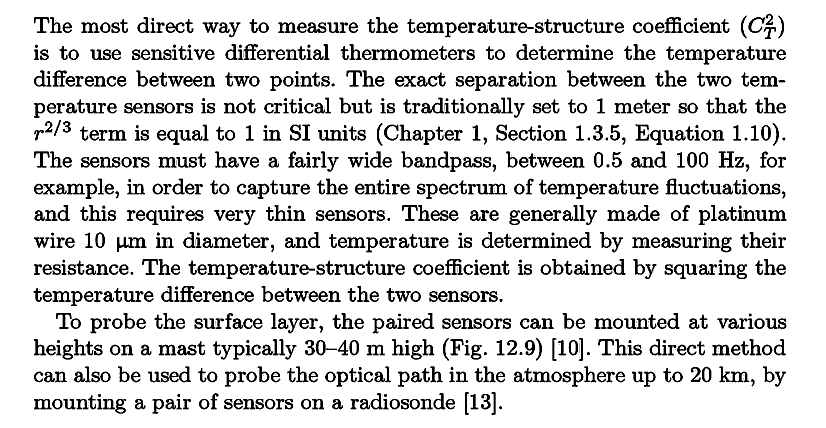Surveying locations for astronomical observatories requires measuring a special parameter of the atmosphere called "seeing". It predicts the smallest angular distance of celestial objects such as two very close stars that can be discerned by an optical telescope. Objects closer than that will be blured together into a single blob no matter how big and precise the telescope is because turbulent air intertwines the light rays comming from the sky.
Astronomical seeing
Earth atmosphere is complex. It can be divided into several layers, and each of those layers contributes to distortions in images of celestial objects recorded by telescopes placed at ground level. In principle, the thicker the atmosphere, the higher the chance that some layer of it will spoil the image; this is the reason that modern telescopes are being built at mountain tops, and preferrably in areas as far away as possible from urban settlements. Those would be lonely islands in the middle of ocean such as Hawaii or high and dry planes such as Atacama desert.
Below are the two excerpts from a book that served as a basic source of knowledge while constructing the microthermal insturment, but the author of this article can unfortunately no longer find a reference to it and appologizes to the authors.

Following are some basic requirements put on a differential thermometer probe suitable for calculating ground-layer turbulences from first principles.

Temperature variations between the two microthermal sensors are expected to be no higher than a few Kelvin. But if seeing conditions are good, and at locations one plans to build an expensive telescope they generally shoud be, temperature differences will be much smaller than that. Suitable sensors are typically made of thin metal wires and we need to measure their resistancs i.e. the difference between the two resistances. Because we don't want to induce new turbulences around sensors by unnecessary heat dissipation, we have to keep currents flowing through them very small, on the order of a few miliamps. Factor all that in and we easily conclude that we are going to measure voltage signals merely a few micro-volts in amplitude!
That is several orders of magnitude below what common electronic circuits have to deal with. So in order to achieve good and reliable results, we need to take great care in component selection, circuit construction and actual physical implementation of the whole gadget.


